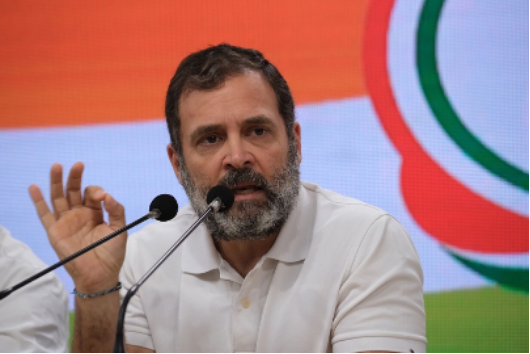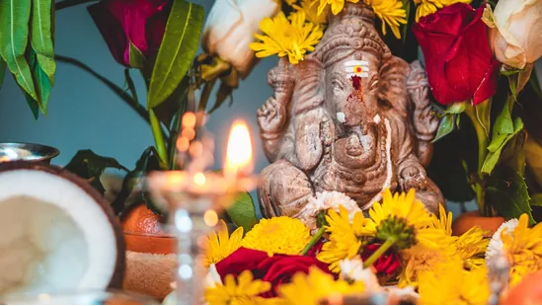Hey everyone, welcome back to the blog! It’s been a while, and I want to apologize for the delay. Thanks for your patience, I’m excited to dive back into sharing new insights with you! Let’s get into it.
There is a very thin line between the acceptance and rejection of knowledge. Doubt is a fundamental human instinct that can cause uncertainty when it comes to approaching knowledge; based on this degree of uncertainty posed by the individual, a claim may be accepted or rejected. In addition, the subjective nature of doubt shows how individual values, beliefs and experiences can impact the approach to a claim. Let’s explore three perspectives that may lead us to question a claim
The image is of Rahul Gandhi, a member of the famous political party, the Indian National Congress. His claim exposed corruption within the ruling government (BJP) and that Congress is superior to it. This claim captivated me while watching the news before the elections.
To favor maximum votes for themselves, political leaders in India often make extreme claims. This is because the literacy rates of the masses are relatively lower and they can leverage on this audience, to make claims without evaluating opposing perspectives or verifying its accuracy.
Data that favors the Congress is often extracted to support these claims, increasing the probability of confirmation bias. Additionally, a leader criticizing the opposition may be questioned due to the same bias influencing the speaker.
Although the claim can be justified with evidence and available data, a grey area remains that induces uncertainty, triggering doubt. This is often caused by the presenter’s personal bias, including a confirmation bias while presenting the claim.
A Congress supporter may not doubt such assertions with lack of consensus due to confirmation bias. The presenter's bias is negligible as the audience too is biased and seeks for information that aligns with their beliefs.
Therefore, this shows how the bias of a person presenting a claim might lead to another doubting it, moreover it explores the perspectives of a supporter and a non-supporter to illustrate how personal biases influence doubts.
The image shows Lord Ganesha, a renowned Hindu figure known for his unique elephant facial form. This depiction of Lord Ganesha caught my interest at Ganesh Chaturthi where people gathered to seek blessings. The devotees claimed his existence thousands of years ago, and the evidence was the Hindu scriptures. This really intrigued me, as I questioned the claim because of the lack of convincing evidence supporting it.
Gods hold great esteem in countries such as India, where hundreds of religions are practiced. Each religion has its own values and beliefs along with a story to tell. These myths may include extreme circumstances, like as one in which Ganesha was born from the elephant-headed goddess. Such claims in mythology, are not backed with any scientific evidence. Moreover, as per the science of human anatomy, it is not biologically possible to have an elephant head.
In the lack of convincing proof or scientific evidence, it is hard to believe claims that contradict traditionally accepted norms of science. In the case of this object, there is no scientific or logical reasoning that justifies the birth of Ganesha from an elephant-headed goddess. Therefore, the lack of evidence supporting the claim increases the uncertainty causing one to highly doubt the claim.
The image is a video that I came across while browsing Google. As a fitness enthusiast, the title of the video caught my eye. Losing 10kgs in 10 days with a single drink was unbelievably drastic. As an IB learner, I am used to looking at the source, for this video it was “Tasty City”. So, I had a look at a few other videos from the same channel and all of them were similar. The videos had views in 1000’s and the content was highly doubtful coming from an unreliable source.
The reliability of the source presenting the claim provoked a sense of doubt in the validity of such an extreme weight loss method. The legitimacy of the method is affected because the source presenting it is unreliable. This means that the producer does not have adequate knowledge and authority to write about the topic, which might lead to false spread of information.
Moreover, unreliable sources like these often clickbait viewers, in order to get more views on their channel. Being ill informed, and making extreme claims to grab the attention of viewers is a common malpractice on YouTube, especially when the creator is not authorized.
Doubting the validity of a claim based on the unreliability of its source is a critical skill, as blindly trusting a source can have detrimental effects. For example, the weight loss method promoted in the video could mislead viewers into following diet plans harmful to their health.
Therefore, an unreliable source can instigate doubt regarding a claim due to its lack of credibility, thereby arousing uncertainty. In context of the weight loss claim, the source’s lack of credibility highlights the spread of misinformation.
To conclude, the above objects highlight distinctive grounds for doubting a claim. Each object has a unique reason that arouses a sense of doubt. The political speech demonstrates how the presenter's bias might lead to doubting the claim, whereas the image of God raises doubt due to a lack of evidence supporting it. Finally, the YouTube weight-loss approach is sceptical because it is derived from an unreliable source. Thus, grounds that create uncertainty due to bias, lack of evidence, authenticity, and credibility lead to one doubting the claim.






Good attempt to create awareness on a complex topic. Glad to see you back. Keep it up ♥️
He’s back❗️loved the blog💯